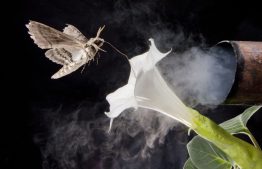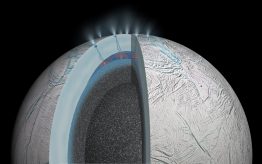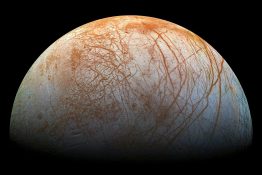A team led by researchers at the University of Washington has discovered a major cause for a drop in nighttime pollinator activity — and people are largely to blame. Nighttime pollution creates a chain of chemical reactions that degrades scent cues, leaving flowers undetectable by smell.
Read more at UW News »UW experts offer hot takes on El Niño, weather and ocean temperatures
Ocean temperatures and their connections to weather trends have been making news. Five UW College of the Environment experts offer their perspectives on the current El Niño — a climate pattern in the tropical Pacific Ocean that affects weather worldwide. UW researchers comment on the current El Niño, its effect on weather in the Pacific Northwest, as well as on regional and global ocean temperature trends.
Read more at UW News »Phosphate, a key building block of life, found on Saturn’s moon Enceladus
An international team including a University of Washington scientist has found that the water on one of Saturn’s moons harbors phosphates, a key building block of life. The team led by the Freie Universität Berlin used data from NASA’s Cassini space mission to detect evidence of phosphates in particles ejected from the ice-covered global ocean of Saturn’s moon Enceladus. Phosphorus, in the form of phosphates, is vital for all life on Earth.
Read more at UW News »Newly discovered form of salty ice could exist on surface of extraterrestrial moons
The red streaks crisscrossing the surface of Europa, one of Jupiter’s moons, are striking. Scientists suspect it is a frozen mixture of water and salts, but its chemical signature is mysterious because it matches no known substance on Earth. An international team led by the University of Washington may have solved the puzzle with the discovery of a new type of solid crystal that forms when water and table salt combine in cold and high-pressure conditions.
Read more at UW News »Bubbles of methane rising from seafloor in Puget Sound
The release of methane, a powerful greenhouse gas responsible for almost a quarter of global warming, is being studied around the world, from Arctic wetlands to livestock feedlots. A University of Washington team has discovered a source much closer to home: 349 plumes of methane gas bubbling up from the seafloor in Puget Sound, which holds more water than any other U.S.
Read more at UW News »





